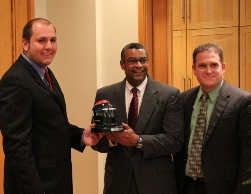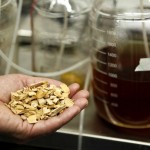 Biodiesel consulting firm Lee Enterprises of Little Rock, Ark., has announced plans for expansion in 2012 into ethanol, biomass, wind, solar and geothermal, and the addition of consultants and strategic partners.
Biodiesel consulting firm Lee Enterprises of Little Rock, Ark., has announced plans for expansion in 2012 into ethanol, biomass, wind, solar and geothermal, and the addition of consultants and strategic partners.
“We are currently the world’s largest biodiesel consulting group, and most of our consultants and strategic partners are already very involved in the other alternative fuels,” said principal owner Wayne Lee.
 Lee notes that the group’s current appraiser, environmental expert, QA experts, and grant writers have backgrounds and experience in these areas, and that the group’s larger strategic partners – Stoel Rives (legal), Christianson & Associates (accounting), IMA of Kansas (insurance), FCStone Merchant Services (feedstock financing), and Executive Leadership Solutions (staffing) – already have very significant presences in these other alternative fuels sectors. “Our goal over the past several years has been to put together a top notch team of the best biodiesel experts in the world”, says Lee. “I am quite satisfied that we have accomplished that goal and now address almost every need in the biodiesel sector.”
Lee notes that the group’s current appraiser, environmental expert, QA experts, and grant writers have backgrounds and experience in these areas, and that the group’s larger strategic partners – Stoel Rives (legal), Christianson & Associates (accounting), IMA of Kansas (insurance), FCStone Merchant Services (feedstock financing), and Executive Leadership Solutions (staffing) – already have very significant presences in these other alternative fuels sectors. “Our goal over the past several years has been to put together a top notch team of the best biodiesel experts in the world”, says Lee. “I am quite satisfied that we have accomplished that goal and now address almost every need in the biodiesel sector.”
“I am a firm believer in biodiesel as the best alternative to diesel fuels and I strongly believe in its future” says Lee. “But, the overall solution to the world’s oil dependency rests with all the alternative fuels working together”. As a result, Lee wants his consulting group to be able to provide the same depth of assistance for all kinds of alternative fuels as they currently provide for biodiesel.


 The U.S. Postal Service may be in the red but they’ve been
The U.S. Postal Service may be in the red but they’ve been 
 According to the report, “
According to the report, “ The Indiana company this week received the 2011 Paul Dana Excellence in Bioenergy Leadership Award from the state department of agriculture. The award was established to honor the memory of Indy Racing League driver Paul Dana who was killed in a racing accident in 2006 after seeing the fulfillment of his dream that the IRL adopt ethanol as a racing fuel.
The Indiana company this week received the 2011 Paul Dana Excellence in Bioenergy Leadership Award from the state department of agriculture. The award was established to honor the memory of Indy Racing League driver Paul Dana who was killed in a racing accident in 2006 after seeing the fulfillment of his dream that the IRL adopt ethanol as a racing fuel.  Paul Dana’s brother Greg, pictured here with Berry, was also on hand for the award presentation. He says the award means a great deal to the Dana family. “We’re honored that folks remember Paul and remember the work that he did, both on the race trace and off,” said Dana. “What Ignite has done is bring to fruition what Paul was working on 6-7 years ago to bring ethanol to all the grassroots racing in the country.”
Paul Dana’s brother Greg, pictured here with Berry, was also on hand for the award presentation. He says the award means a great deal to the Dana family. “We’re honored that folks remember Paul and remember the work that he did, both on the race trace and off,” said Dana. “What Ignite has done is bring to fruition what Paul was working on 6-7 years ago to bring ethanol to all the grassroots racing in the country.”  South Dakota Governor Dennis Daugaard says
South Dakota Governor Dennis Daugaard says 
 “We’re disappointed,” said Anne Steckel, vice president of federal affairs for the
“We’re disappointed,” said Anne Steckel, vice president of federal affairs for the 
